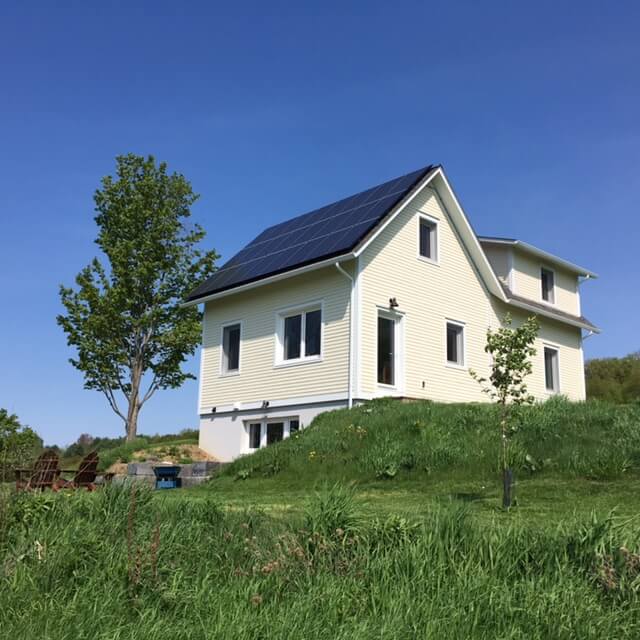Charlotte home dubbed greenest in the state

A Charlotte home built by Ken Ruddy of Fiddlehead Construction for Tai Dinnan and Evan Webster has won 2016’s “Vermont’s Greenest Residential Building” award from Vermont Green Building Network. The only house to measure more efficient in the history of this annual award was another Charlotte house, designed and owned by David Pill and Hillary Maharam.
Rather than buy an existing house Dinnan and Webster decided to create a modest, energy-efficient home using current technology and techniques. “We hope this attention brought by this award will help others realize that efficiency can be affordable and should be part of every new home’s construction,” Dinnan said.
Ruddy has developed a streamlined and cost-effective approach to building this type of high-performance home that incorporates enhanced energy efficiency but also utilizes best building practices and focuses on durable detailing, he said.
The award-winning, single-family residence on the southern slope of Mt. Philo has walls built with air barriers, vented roofs with cathedral ceilings, wastewater heat recovery for both baths and kitchen, and ventilation driven by indoor air quality monitoring, among other special features. It’s an electric home with supplemental solar and a woodstove.
After Dinnan and Webster had been living in the house for a year to prove its energy efficiency, Ruddy applied for the award. It makes sense from both a financial and sustainability perspective to build this way, Ruddy said. Not only did investing in this new home reduce Dinnan and Webster’s impact on the environment, they also experienced short-term savings.
“Because we never needed to get infrastructure such as radiators, propane, oil or gas lines and tanks, investing in efficiency didn’t end up costing more money,” Dinnan said.
When you include energy costs along with the mortgage, these homes are less expensive on a monthly basis than a new home built to code standard, Ruddy said. “Tai and Evan sized the home for their current and future needs and no more, so it is smaller, but functional,” he said. “Efficiency Vermont’s High Performance Homes standard, which this home used as a starting point, was not only developed to hit the sweet spot with regard to cost effectiveness to reach net zero, but also incorporates safeguards to ensure the homes are comfortable and durable.”
Net Zero is a term used to describe a building with zero net energy consumption.
Lindsay Jones from Efficiency Vermont was the energy consultant on the project. The house also won Efficiency Vermont’s 2016 “Best of the Best” in New Residential Construction. “The home was built with insulation levels approximately twice that of Vermont’s baseline residential building code, has exceptionally low air leakage, and energy efficient heating and ventilation systems,” Jones said.
Efficiency Vermont initiatives allowed Dinnan and Webster to save money and receive rebates. “Their work in the state really helps encourage homeowners like us to make choices that are good for the environment,” Dinnan said.

